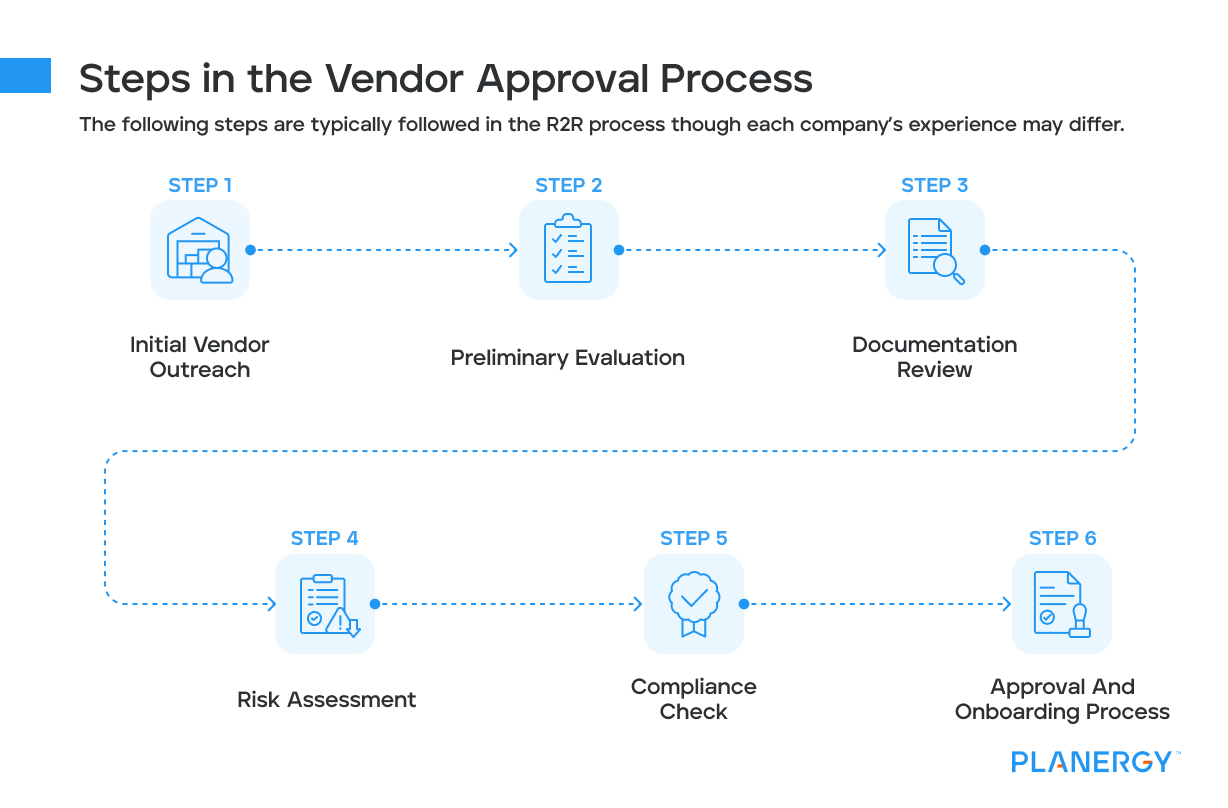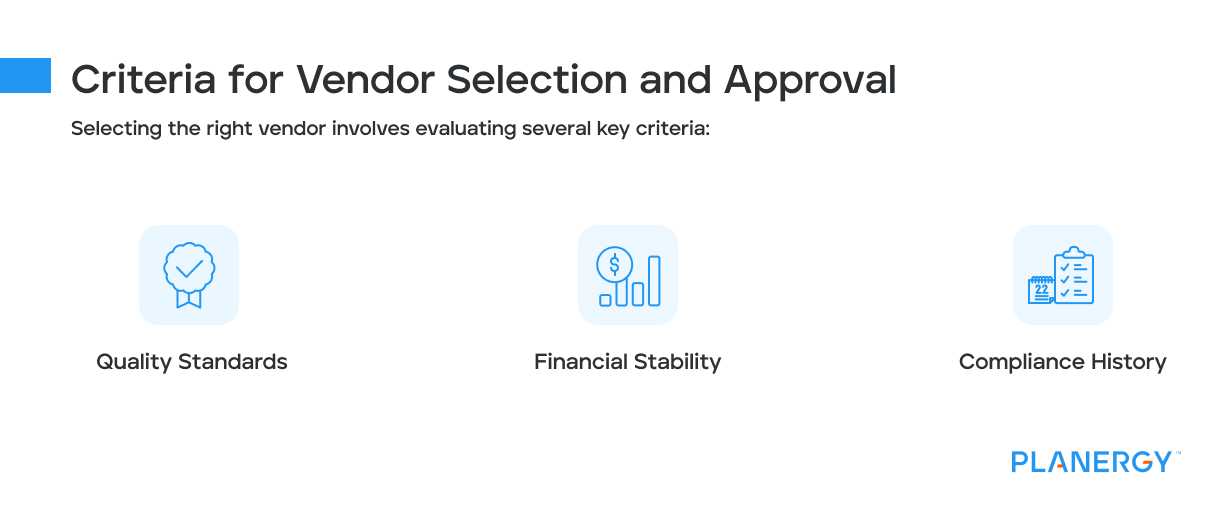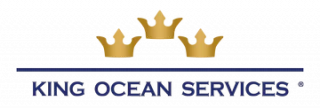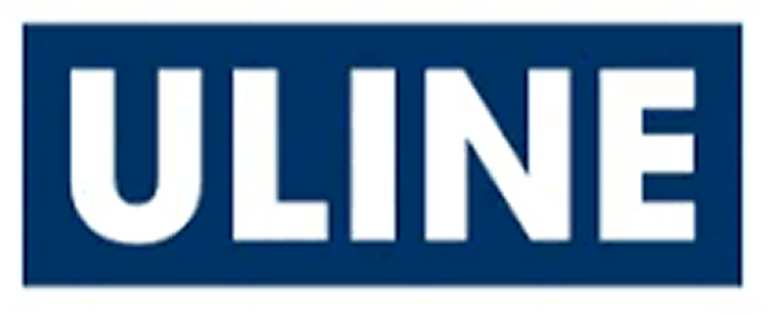The vendor approval process is a systematic procedure companies utilize to evaluate, select, and approve suppliers.
This process ensures you engage with reliable vendors, consistently delivering quality products or services.
A structured approval process can enhance operational efficiency, mitigate risks, and foster long-term partnerships with trusted suppliers throughout your procurement process.
What is the Vendor Approval Process?
The vendor approval process involves a series of evaluations and checks designed to verify the suitability of potential suppliers.
This ensures that vendors meet the business’s quality, financial, and compliance criteria before they are formally added to the vendor list and participate in your purchasing process.
Steps in the Vendor Approval Process

Initial Vendor Outreach
Start by identifying a list of vendors who can meet your business needs.
This can be achieved through comprehensive market research and leveraging industry networks.
Define the specific requirements and criteria providers must meet, such as product quality, capacity, and geographical location.
Use online directories, trade shows, industry forums, and referrals from trusted contacts to compile a list of prospective vendors.
This stage is crucial for casting a wide net and ensuring you have a diverse pool of candidates to evaluate.
Here, you’ll issue requests for proposals (RFPs), requests for quotes (RFQs), Requests for Information (RFIs), or whatever procurement document is relevant to your needs.
Preliminary Evaluation
Once potential vendors are identified, assess their capabilities.
This involves thoroughly evaluating and vetting each vendor’s ability to deliver the required goods or services.
Key factors to consider include production capacity, technology infrastructure, customer service, and the vendor’s reputation in the industry. Conduct interviews or site visits to get a firsthand look at their operations.
Align these capabilities with your business needs to determine the vendors most likely to meet your expectations.
Documentation Review
The documentation review process is vital for verifying vendor information and ensuring their legitimacy.
Collect essential documents such as financial statements, which provide insights into the vendor’s economic health, certifications that validate compliance with industry standards, and references from previous clients.
This step confirms the vendor’s ability to meet your quality and reliability standards.
Carefully review all documents to ensure accuracy and completeness, which will help make an informed decision.
Risk Assessment
Risk assessment involves evaluating potential risks associated with each vendor, focusing on financial stability, delivery reliability, and ethical practices.
Analyze financial reports to assess the vendor’s long-term viability and ability to withstand economic fluctuations.
Evaluate their track record for delivering goods on time and maintaining quality standards.
Additionally, investigate the vendor’s adherence to ethical practices, such as labor rights and environmental sustainability.
This comprehensive risk analysis helps mitigate future disruptions in the supply chain.
Compliance Check
Ensuring that vendors meet legal and industry-specific compliance standards is imperative to avoid regulatory issues.
This involves verifying that the vendor adheres to relevant laws and industry guidelines, such as environmental regulations, safety standards, and labor laws.
Confirm that vendors meet these requirements through compliance audits and third-party assessments.
This step protects your business from legal liabilities and reinforces your commitment to corporate responsibility and ethical operations.
Approval and Onboarding Process
Once a new vendor has passed all previous evaluations, they can move from pending approval to vendor onboarding into your procurement system.
This involves formalizing the relationship through contracts that outline the terms and conditions of the partnership, including pricing, delivery schedules, and performance metrics.
Integrate the vendor into your supply chain management system or ERP to facilitate seamless transactions and communication.
Provide training and resources to ensure the vendor fully aligns with your operational processes and expectations.
This integration sets the stage for a productive and mutually beneficial relationship.
Implementing an Effective Vendor Approval Process
To effectively implement the process, you should establish clear guidelines and benchmarks that align with your operational goals.
Leveraging technology for automation and maintaining transparent communication throughout the process can significantly enhance efficiency and accuracy.
Criteria for Vendor Selection and Approval
Selecting the right vendor involves evaluating several key criteria:

Quality Standards
Ensuring a vendor consistently delivers high-quality goods or services is paramount to maintaining your company’s reputation and customer satisfaction.
To evaluate this, you should conduct thorough quality assessments of the vendor’s products or services.
This can involve requesting product samples, reviewing their quality control processes, and analyzing customer feedback and complaint histories.
A vendor’s commitment to quality can also be gauged through certifications that demonstrate adherence to international quality standards, such as ISO 9001.
Regular audits and performance reviews ensure that quality remains consistent over time.
Financial Stability
Financial stability is a critical criterion in vendor selection, as it directly affects a vendor’s ability to deliver on their commitments.
You should review the vendor’s financial statements, credit ratings, and history to assess this.
Key indicators such as cash flow, debt levels, and profitability ratios can provide insights into the vendor’s economic health and resilience to market fluctuations.
Engaging with financial analysts or utilizing third-party financial assessment services can offer an unbiased analysis of the vendor’s fiscal stability.
This diligence helps prevent supply chain disruptions due to a vendor’s financial difficulties.
Compliance History
Reviewing a vendor’s compliance history is essential to ensure alignment with legal and industry standards.
This involves examining past compliance with regulations relevant to your industry, such as environmental laws, safety protocols, and labor regulations.
You should request documentation of past audits and compliance certifications and consider using compliance management software to track and verify these records.
A vendor with a strong compliance history minimizes legal risks and reflects a commitment to ethical practices and corporate responsibility.
Building relationships with compliant vendors reinforces your business’s dedication to sustainable and ethical operations.
Example Process
Consider a manufacturing company seeking vendors for critical components.
In its selection process, the company might prioritize vendors with ISO certification, ensuring adherence to international quality standards.
The company would also thoroughly evaluate vendors’ financial stability, looking for those with robust financials and a history of economic resilience.
Additionally, they would review potential vendors’ compliance histories, ensuring they have a clean track record with industry regulations.
By setting these criteria, the manufacturing company ensures it partners with vendors capable of maintaining quality, reliability, and compliance, ultimately supporting their production goals and minimizing operational risks.
Creating a Vendor Approval Process Checklist
Developing a comprehensive vendor approval process checklist ensures a streamlined and efficient evaluation of potential suppliers.
A well-structured checklist standardizes the approval process, sets up the appropriate approval routing, and helps mitigate risks by thoroughly assessing all necessary criteria. Here’s how to build an effective checklist:

Documentation Requirements
The first component of your checklist should be a detailed list of required documents.
This typically includes tax certificates, financial records, and liability insurance.
Importance: These documents are crucial for verifying a vendor’s legitimacy and financial health.
Tax certificates confirm compliance with tax regulations, financial records offer insights into economic stability, and liability insurance protects against potential losses or damages.
Organization and Verification: Create a centralized database or digital platform to collect and store these documents. Use a checklist to track the receipt and verification of each document.
Assign a team or individual responsible for cross-verifying the authenticity of the documents to prevent fraud or discrepancies.
Evaluation Criteria
Establishing clear evaluation criteria involves setting benchmarks for assessing the quality of products or services, delivery timelines, and service levels.
Quality Benchmarks: Define acceptable quality levels through standards or certifications the vendor must meet.
This could include compliance with ISO standards or industry-specific quality measures.
Delivery Timelines: Set specific, measurable expectations for delivery schedules to ensure reliable supply chain operations.
Service Levels: Outline the expected level of customer service support, including response times and issue resolution protocols.
Role in Approval Process: These criteria help objectively compare and rank vendors, ensuring the selected vendor aligns with your company’s operational goals and customer expectations.
Approval Signatures
Approval signatures from relevant stakeholders are crucial in formalizing vendor selection.
Process: Create a document or digital form that outlines the vendor’s offerings and the results of the evaluation criteria assessments.
This should be circulated among key decision-makers, such as procurement managers, financial officers, and legal counsel.
Importance: This step ensures that all necessary parties agree on the vendor choice, preventing unilateral decisions and fostering accountability.
It also acts as a record of consensus that can be referred to in case of disputes or issues with vendor performance.
Compliance Checks
Compliance checks are essential for verifying that vendors adhere to legal, financial, and industry-specific standards.
Verification Process: Regularly review and update compliance requirements to reflect current laws and standards.
Utilize compliance management software to automate and streamline the tracking of vendor adherence to these standards.
Tools and Methods: Implement a system of audits or third-party assessments to validate compliance.
This could include site visits, certification verification, and compliance audits conducted by external experts.
Significance: Compliance standards protect your business from legal liabilities and reputational damage.
They also ensure ethical practices and align with corporate responsibility objectives.
Once you work out the business process, you can create a template to follow each time you need to add new vendors.
Common Vendor Approval Problems
Several challenges can arise in the vendor approval process that may hinder the efficiency and effectiveness of supplier selection.
Addressing these issues proactively is essential to maintaining smooth operations and minimizing risk exposure.

Challenges
Delays in Approval
Delays often occur due to lengthy evaluation procedures or bottlenecks in decision-making.
These can disrupt the procurement timeline, leading to delays in project deliveries and affecting the overall supply chain.
Incomplete Documentation
Vendors may submit incomplete or incorrect documentation, which can stall approval.
This wastes time and increases the risk of onboarding vendors who may not fully meet the company’s standards.
Compliance Issues
Non-compliance with legal and industry standards can expose a company to regulatory penalties and reputational damage.
Vendors who fail to meet compliance requirements can compromise the company’s ethical and operational standards.
These challenges can lead to operational inefficiencies, increased costs, and heightened risk exposure, significantly impacting a company’s ability to compete effectively in the market.
Solutions
Implementing Technology Solutions for Automated Document Tracking
Leveraging technology, such as document management systems, can streamline the collection and tracking of vendor documentation.
These systems automate reminders for missing documents and flag discrepancies, ensuring all required documentation is complete and accurate before moving forward in the approval process.
This reduces administrative burdens and accelerates the approval timeline.
Providing Training to Employees Involved in Vendor Assessments
Equipping employees with the right skills and knowledge through regular training programs ensures they are well-versed in vendor approval.
Training can cover document verification, risk assessment, and compliance checks.
Skilled employees can conduct more thorough evaluations, reduce errors, and make faster, informed decisions.
Establishing Clear Communication Channels to Resolve Compliance Issues Promptly
Open and efficient communication channels between the procurement team and vendors are critical for swiftly addressing compliance issues.
Designating points of contact for compliance-related queries and setting up regular check-ins with vendors can help resolve issues before they escalate.
This proactive approach ensures that both parties remain aligned and that compliance standards are consistently met.
Best Practices for Implementing a Vendor Approval Process
A comprehensive vendor approval process is crucial for maintaining operational excellence and building strong supplier relationships.
Here are some best practices that can enhance the effectiveness of this process:
Transparency
Maintaining transparency in vendor approval is essential for fostering trust and collaboration.
Open communication with vendors about your expectations and requirements helps ensure that all parties are on the same page.
This can be achieved by:
Clearly Defining Expectations: Provide vendors with detailed guidelines and criteria they must meet during approval.
This includes quality standards, compliance requirements, and delivery timelines.
Regular Communication: Schedule regular meetings or touchpoints with vendors to discuss their progress, address any concerns, and provide feedback.
This ongoing dialogue helps prevent misunderstandings and keeps both parties aligned.
Documentation Sharing: Ensure that all relevant documentation, such as contracts and compliance requirements, is shared with vendors promptly.
This transparency allows vendors to understand their obligations and prepare accordingly.
By prioritizing transparency, companies can build stronger vendor relationships, leading to improved cooperation and performance.
Digital Tools
Using digital tools and procurement software can greatly enhance the efficiency of the vendor approval process. These technological solutions offer several benefits:
Automation: Procurement software can automate many repetitive tasks in the approval process, such as document collection, compliance checks, and status updates.
This reduces manual effort, minimizes errors, and speeds up the overall process.
Centralized Data Management: Digital tools provide a centralized platform for vendor management.
This allows easy access to information (including all vendor records), facilitating better decision-making and collaboration among stakeholders.
Real-Time Tracking: With procurement software, companies can track the progress of vendor approval workflow in real time, ensuring transparency and accountability.
This visibility helps identify bottlenecks and allows for timely interventions.
Regular Reviews
Regular reviews of vendors are vital for ensuring they meet your company’s performance and compliance standards.
This ongoing evaluation process includes:
Performance Monitoring: Regularly assess vendor performance against predefined benchmarks, such as quality of goods/services, delivery reliability, and customer service levels.
This helps identify areas for improvement and ensures that vendors contribute positively to your supply chain.
Compliance Audits: Periodically review vendors’ adherence to legal and industry-specific standards.
This includes verifying certifications, conducting site visits, and auditing compliance documents. Regular audits help mitigate risks associated with non-compliance.
Feedback and Improvement: Provide constructive feedback to vendors based on review findings and work collaboratively to address any issues.
Encouraging continuous improvement enhances vendor performance and strengthens the partnership.
Strengthen Your Vendor Approval and Management with PLANERGY
A well-structured vendor approval process is vital for maintaining quality and reliability in supply chains.
By continuously refining this process and adhering to best practices, businesses can secure their operations against risks and enhance their competitive edge.
Encourage your procurement team to regularly review and update the vendor approval process to adapt to changing market conditions and regulatory requirements.




